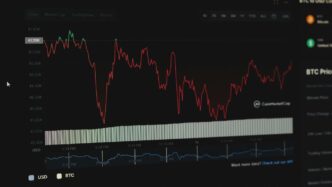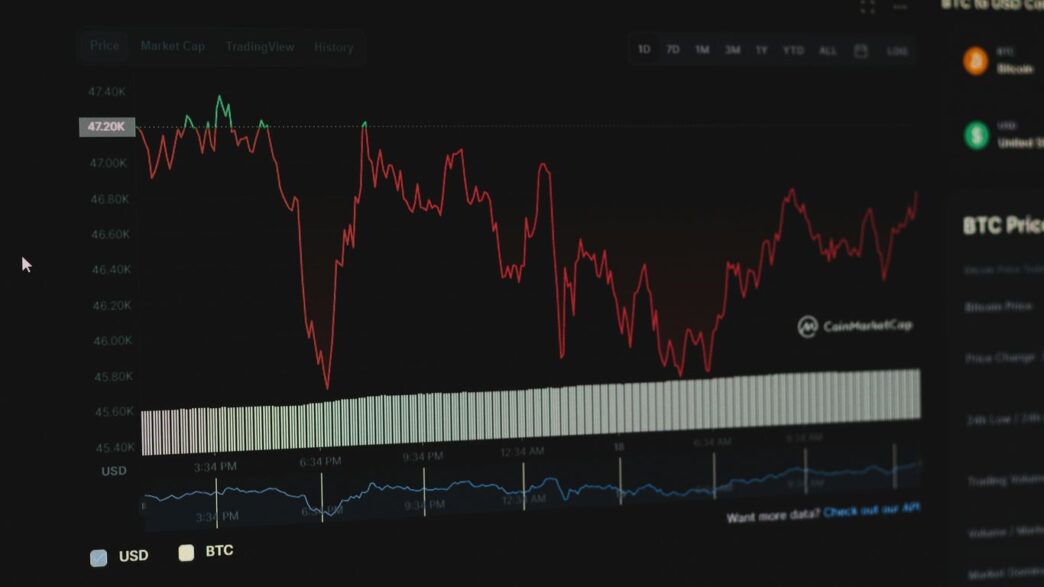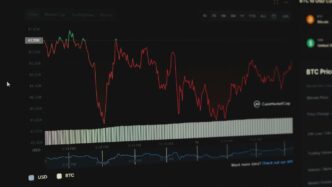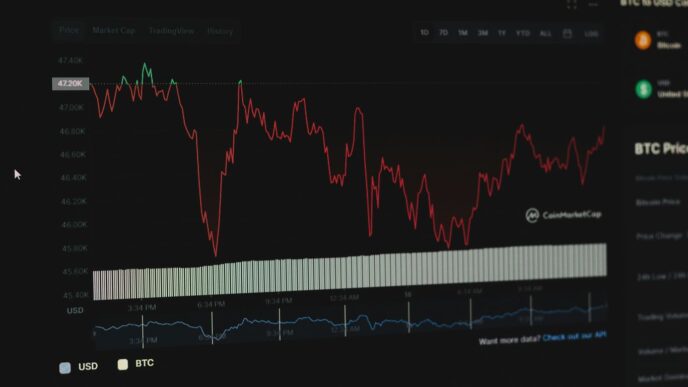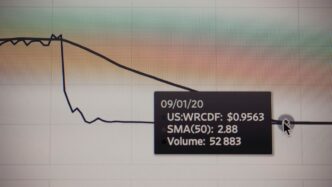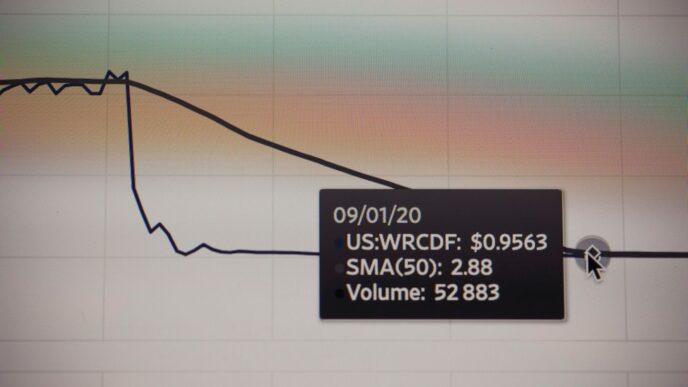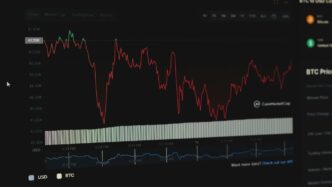Hey everyone! So, I’ve been looking into Advanced Micro Devices, or AMD, lately. You know, the company that makes those chips for computers and gaming consoles? It seems like they’re doing pretty well, and I wanted to break down what’s happening with their market share. It’s not always easy to keep track of this stuff, but I’ve gathered some info on where they stand now and what might happen next. Let’s take a look.
Key Takeaways
- AMD is making strong moves in the data center market, especially with AI chips, and also holding its own in the consumer PC and gaming sectors.
- The company’s financial performance shows growth, with revenue and earnings trending upwards, though profitability metrics need continuous watching.
- Analysts generally have a positive outlook on AMD, with many recommending ‘Buy’ or ‘Strong Buy’ ratings, anticipating future growth.
- AMD faces tough competition from giants like Intel and Nvidia, but it’s carving out its own space in key areas like x86 processors and GPUs.
- Future growth for AMD looks promising, driven by the increasing demand for AI chips, new product releases, and potential expansion into new industries.
AMD’s Dominance in Key Market Segments
AMD has really been making waves lately, and it’s not just in one area. They’ve carved out significant spots in some really important tech markets. It feels like everywhere you look, AMD’s chips are powering something new and exciting.
This is where AMD is really showing its strength. The demand for powerful processors and accelerators in data centers, especially for AI tasks, is through the roof. AMD’s EPYC processors have been gaining traction, offering strong performance for server workloads. But the real buzz is around their AI accelerators. They’re stepping up to compete with the big players, and early signs suggest they’re making a real impact. This push into AI is seen as a major growth driver for the company. Analysts are watching this space closely, and the recent partnership with OpenAI is a big signal of their ambitions in this area. It’s a tough market, but AMD seems to be finding its footing.
When we talk about everyday computers and gaming, AMD’s Ryzen processors and Radeon graphics cards are household names. They’ve consistently offered competitive performance, often at attractive price points, which is great for consumers. In the gaming world, their involvement with consoles like the PlayStation and Xbox means they have a solid base. For PCs, they’re battling it out with Intel in the CPU space and Nvidia in the GPU arena. It’s a dynamic segment, and AMD’s ability to innovate here directly impacts their overall market presence. They’ve also been expanding their AI PC portfolio, which could be a significant factor going forward.
This segment might not get as much mainstream attention, but it’s incredibly important. AMD’s acquisition of Xilinx really bolstered their position here. They’re providing adaptive SoCs (System on a Chip) and FPGAs (Field-Programmable Gate Arrays) that are used in a huge variety of applications. Think about things like industrial automation, automotive systems, and networking equipment. These aren’t just off-the-shelf chips; they’re often highly customized solutions. AMD’s strength here comes from their ability to offer flexible and powerful processing solutions for specialized needs. This diversification is a smart move, spreading their influence beyond just traditional computing and gaming markets. Their work in areas like adaptive SoCs is key to their long-term strategy.
Analyzing AMD’s Financial Performance and Growth

When we look at AMD’s financial health, it’s clear they’ve been on a pretty impressive run lately. It’s not just about making cool chips; it’s about how those chips translate into actual money for the company. The company’s revenue has seen a solid upward trend, showing that their products are resonating with customers across various markets.
Let’s break down some of the numbers. We’re seeing increases in both total revenue and net income year-over-year, which is always a good sign. Earnings per share (EPS) have also climbed, indicating that the company is becoming more profitable on a per-share basis. This kind of growth is what investors look for, and it suggests that AMD is managing its operations effectively.
Here’s a quick look at some key financial metrics:
- Revenue Trends: Total revenue has been on the rise, with recent quarters showing healthy year-over-year and quarter-over-quarter increases. This points to strong demand for their products.
- Profitability Metrics: Net income and profit margins have also improved. This means AMD is not only selling more but is also keeping a larger portion of that revenue as profit.
- Earnings Per Share (EPS): A consistent rise in EPS suggests that the company’s profitability is growing faster than the number of outstanding shares, which is a positive indicator for shareholders.
Looking at the bigger picture, AMD’s financial performance is a direct reflection of its strategic moves and product development. The company has been investing heavily in research and development, and it seems to be paying off. Their ability to compete in demanding sectors like data centers and AI is a major driver of this financial success. For a more detailed look at analyst expectations and financial forecasts, you can check out AMD analyst estimates.
It’s also worth noting how AMD stacks up against its competitors financially. While Intel and Nvidia are giants in their own right, AMD has been carving out a significant share, and its financial results are starting to reflect that competitive positioning. The company’s valuation metrics, like P/E ratios, are often watched closely by investors to gauge how the market perceives its future growth potential. Recent performance shows strong year-to-date and multi-year returns, outperforming broader market indices like the S&P 500.
Analyst Perspectives on AMD Market Share
So, what are the folks who watch the stock market for a living saying about AMD? It’s a pretty interesting picture, honestly. They’re looking at everything from how many chips AMD is selling to how much money the company is making. It’s not just about the numbers, though; they’re also trying to figure out what’s coming next.
Recent Analyst Ratings and Price Targets
Analysts seem to be pretty optimistic about AMD these days. Many have been upping their price targets, which is basically them saying they think the stock will be worth more in the future. For example, one analyst recently bumped their target to $210, up from $155. Another is looking at a 12-month target of $275. It’s a good sign when these experts are feeling positive.
Here’s a quick look at some recent analyst actions:
- Goldman Sachs: Maintained a ‘Neutral’ rating but raised their price target from $150 to $210.
- TD Cowen: A recent report shows a price target boost, though the exact numbers aren’t always public.
- Argus: Added AMD to their ‘Focus List’ of top stock picks.
It’s worth noting that not everyone agrees, and you’ll see a range of ratings from ‘Strong Buy’ to ‘Hold’. That’s pretty normal in the stock market.
Impact of Strategic Partnerships on Market Share
Partnerships are a big deal for AMD, and analysts are definitely paying attention. The recent news about a partnership with OpenAI, for instance, has really gotten people talking. This kind of collaboration is seen as a major win, potentially boosting AMD’s presence in the AI chip market significantly. When big players team up, it can change the game.
These partnerships can lead to:
- Increased demand: Collaborations can open doors to new customers and larger orders.
- Product development: Working with others can speed up the creation of new and better chips.
- Market validation: Partnering with well-known companies signals to the rest of the market that AMD’s technology is top-notch.
Expert Opinions on Future Growth Potential
When you look at the long-term picture, analysts seem to think AMD has a lot of room to grow. They’re pointing to AMD’s strong position in areas like data centers and gaming, but also its growing role in AI. The acquisition of Xilinx also plays a part, giving them a bigger footprint in embedded systems. Basically, they see AMD as a company that’s not just keeping up but actively shaping the future of computing hardware. It’s not just about today’s sales; it’s about where they’re headed.
Competitive Landscape and AMD’s Market Share
It’s a tough game out there for chip makers, and AMD is right in the thick of it. They’re up against some serious giants, and keeping pace means constantly innovating and finding smart ways to grab market share.
Competition with Intel and Nvidia
When we talk about processors, Intel has been the name everyone knew for ages. AMD has been chipping away at that dominance, especially in the server and PC markets. They’ve been making some really strong CPUs that are giving Intel a run for its money. Then there’s Nvidia, which has really taken the lead in the AI and high-end graphics card space. AMD is pushing hard with its own GPUs and AI accelerators, like the MI300X, trying to carve out its own slice of that booming market. It’s a constant battle of who can offer the best performance for the price, and who can get their chips into the next big thing. AMD’s recent partnership with OpenAI is a big move that could really shake things up in the AI chip race.
Market Share in x86 Processors
For a long time, Intel was the undisputed king of x86 processors. But AMD, with its Ryzen and EPYC lines, has made some serious gains. They’ve managed to capture a noticeable chunk of the market, particularly in servers where EPYC processors offer a compelling mix of core counts and performance. While Intel still holds the larger share overall, AMD’s progress is undeniable. It’s a dynamic situation, and analysts are watching closely to see if AMD can continue this upward trend.
GPU Market Share Dynamics
The graphics processing unit (GPU) market is another area where AMD is fighting hard. In the consumer space, their Radeon graphics cards compete directly with Nvidia’s GeForce. It’s a popular segment, and AMD has a solid presence. However, the real battleground is shifting towards data centers and AI. Nvidia has a strong lead here, but AMD is investing heavily in its Instinct line of accelerators. They’re also supplying chips for gaming consoles like the PlayStation and Xbox, which is a steady business. The competition means we, as consumers and businesses, often benefit from better products and prices.
Here’s a quick look at how things have been shaping up:
- Consumer GPUs: AMD and Nvidia are the main players, with market share often fluctuating based on new product releases and pricing.
- Data Center/AI Accelerators: Nvidia currently dominates, but AMD is making significant investments and strategic moves to increase its share.
- Gaming Consoles: AMD is a key supplier for both Sony and Microsoft, providing a stable revenue stream.
Future Projections for AMD Market Share
Looking ahead, AMD seems poised to make some significant moves, especially in areas where chips are getting smarter and faster. The company’s been working hard to get its products into more hands, and it looks like that effort is starting to pay off. The big story right now is AI, and AMD is definitely trying to grab a piece of that pie.
AI Chip Demand and AMD’s Role
The demand for chips that can handle artificial intelligence tasks is exploding. Companies are building more data centers and developing new AI applications, and they need powerful processors to do it. AMD has been developing its own AI accelerators, and they’ve recently landed a pretty big deal with OpenAI. This is a huge step, showing that major players see AMD as a serious contender in this space. It’s not just about the big AI models either; there’s a growing need for AI capabilities in everyday devices, too.
Next-Generation Product Cycles
AMD’s success often hinges on how well its new products perform against the competition. They’ve got a history of releasing chips that offer good performance for the price, and that strategy seems to be working. We’re expecting new generations of their CPUs and GPUs to come out, which should help them keep pace, and maybe even get ahead, in the PC and data center markets. The company also announced some new adaptive SoCs recently, which are designed for specific, high-performance tasks. It’s all about staying ahead of the curve with new technology.
Expansion into New Markets
Beyond AI and traditional computing, AMD is also looking at other areas. They’ve been involved in gaming consoles for a while, and that’s a steady business. But they’re also pushing into things like automotive and industrial applications with their specialized chips. These markets might not be as flashy as AI right now, but they represent long-term growth opportunities. Getting their chips into more cars or factory equipment could really diversify their revenue streams. It’s a smart move to not put all their eggs in one basket, and it looks like AMD is projected to outperform the market in the coming year because of these efforts.
Wrapping Things Up
So, looking at all the numbers and news, it’s pretty clear AMD is making some serious moves. They’ve been doing well, especially with their work in data centers and that big AI deal with OpenAI. Analysts seem to be feeling good about them too, with price targets going up. Of course, there are always challenges, like those potential export rules, but the company seems to be handling things. It looks like AMD is set to stay a big player in the chip world for a while, especially as AI keeps growing. We’ll just have to keep watching how it all plays out.
Frequently Asked Questions
What is AMD’s main business?
AMD makes computer chips. These chips are used in different things like computers, gaming consoles, and big computer systems for businesses. They have different types of chips for different jobs, such as processors (CPUs), graphics chips (GPUs), and special chips for artificial intelligence (AI).
How is AMD doing in the market compared to others?
AMD is a big player, especially in making chips for computers and servers. They compete with companies like Intel and Nvidia. They are also making a name for themselves in the fast-growing area of AI chips.
What are AMD’s recent financial results like?
AMD has seen good growth in its sales and earnings recently. The company’s revenue has gone up, and they are making more profit. This shows they are doing well financially.
What do experts think about AMD’s future?
Many experts and analysts believe AMD has a bright future. They point to AMD’s strong products, especially in AI, and its partnerships as reasons for expected growth. Some analysts have even raised their price targets for AMD’s stock.
Is AMD involved in the AI chip market?
Yes, AMD is very involved in the AI chip market. They are developing and selling special chips designed for AI tasks, which is a rapidly expanding part of the technology world. Deals with companies like OpenAI show their importance in this area.
What are some of AMD’s key products?
AMD makes several important products. These include their EPYC processors for servers, Ryzen processors for PCs, Radeon graphics cards for gaming and professional use, and their Instinct accelerators for AI and high-performance computing. They also make chips for gaming consoles like PlayStation and Xbox.

